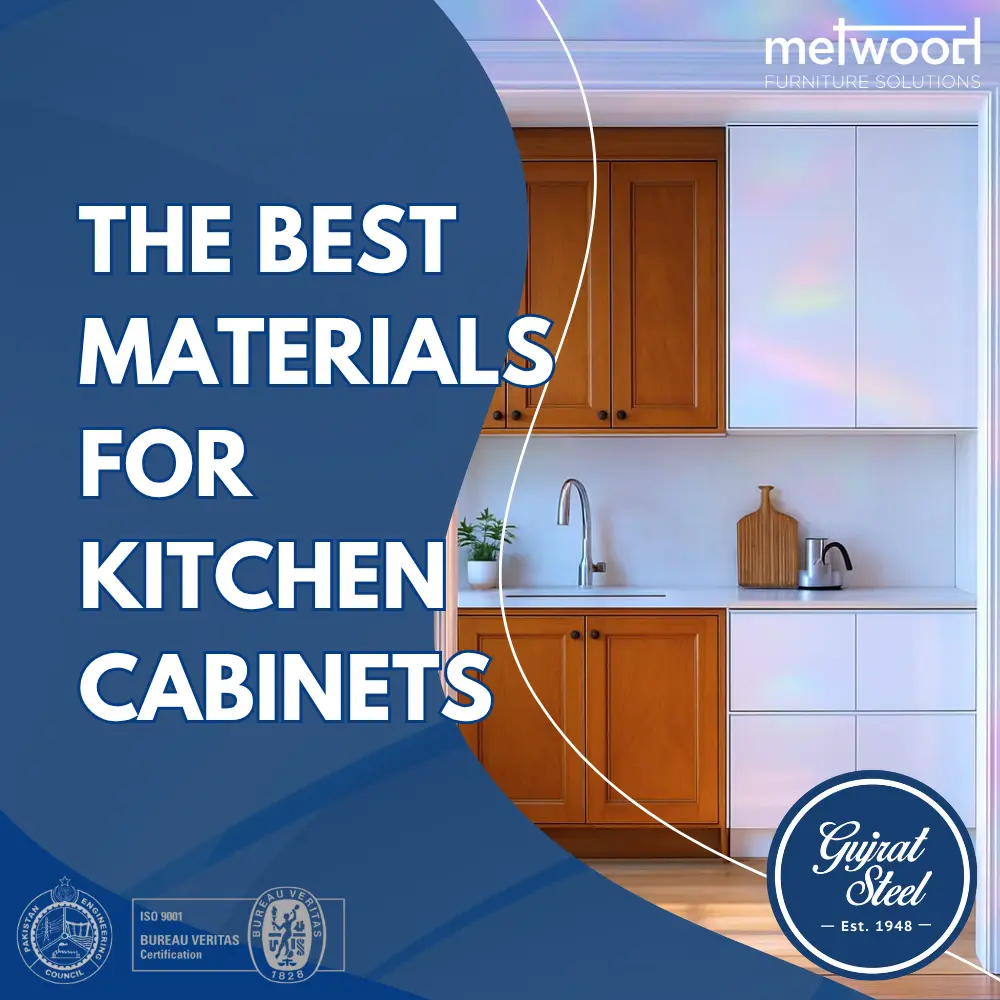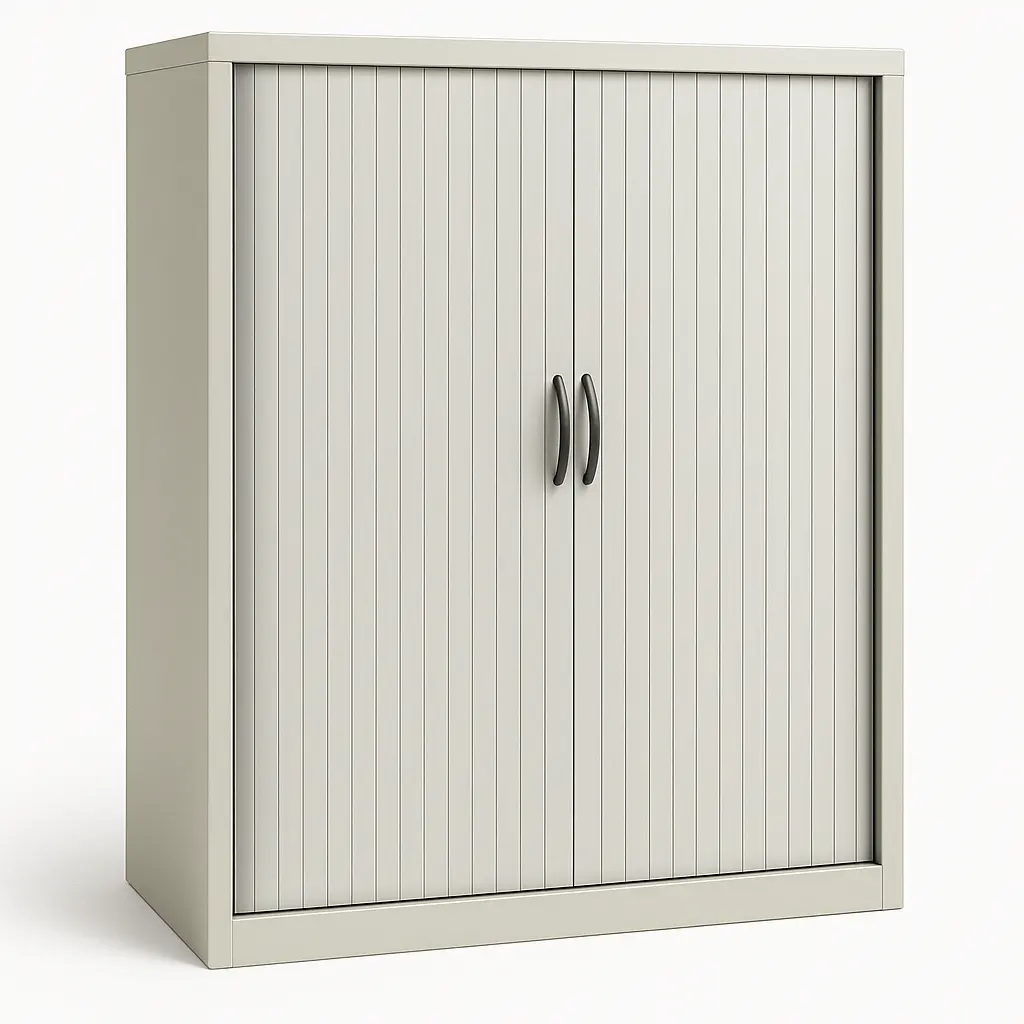The best cabinets use strong plywood boxes. For doors, choose solid wood or MDF for a classic, repairable look and premium feel. Alternatively, choose PVC for modern kitchens where being 100% waterproof and low-maintenance is more important.
Key Takeaways
- The “Gold Standard” Combo: For the best mix of quality and value, use Plywood for cabinet boxes. For doors, choose Solid Wood for a stained finish or MDF for a flawless painted finish.
- Plywood is King for Boxes: Plywood’s superior strength and moisture resistance make it the ideal material for the cabinet’s structural frame (the box).
- MDF for a Perfect Paint Job: MDF’s ultra-smooth, stable surface is perfect for painted doors, as it won’t warp or show hairline cracks like solid wood can.
- PVC’s Superpower is Water: PVC is 100% waterproof and termite-proof, making it the ultimate choice for wet areas or pest-prone homes. Its main weakness is heat sensitivity.
- Choose Based on Your Goal: Opt for wood-based materials for a timeless, premium look that can be repaired. Choose PVC for low-maintenance, modern kitchens where waterproofing is the top priority.
- The Hybrid Solution: A smart strategy is to use a PVC cabinet under the sink (the highest-risk area for leaks) and wood/plywood cabinets for the rest of the kitchen.
Choosing the right material for your kitchen cabinets is one of the most critical decisions in a renovation. It impacts the look, durability, and budget of your entire project. With options ranging from timeless solid wood to modern PVC, making an informed choice is essential for a kitchen you’ll love for years.
This guide will break down the best materials for kitchen cabinets, compare them head-to-head, and help you decide which one is truly the best for your home and lifestyle.
Table of Contents
The Quick Answer: The “Gold Standard” Combination
For most people seeking the best balance of durability, quality, and value, the ideal combination is:
- Cabinet Boxes: Plywood
- Cabinet Doors/Frames: Solid Wood (for stained, natural finishes) or MDF (for flawless painted finishes)
Part 1: The Traditional Champions – Wood and Wood-Based Materials
These are the tried-and-true materials that have been the backbone of kitchen design for decades. They offer warmth, character, and proven longevity.
1. Solid Wood
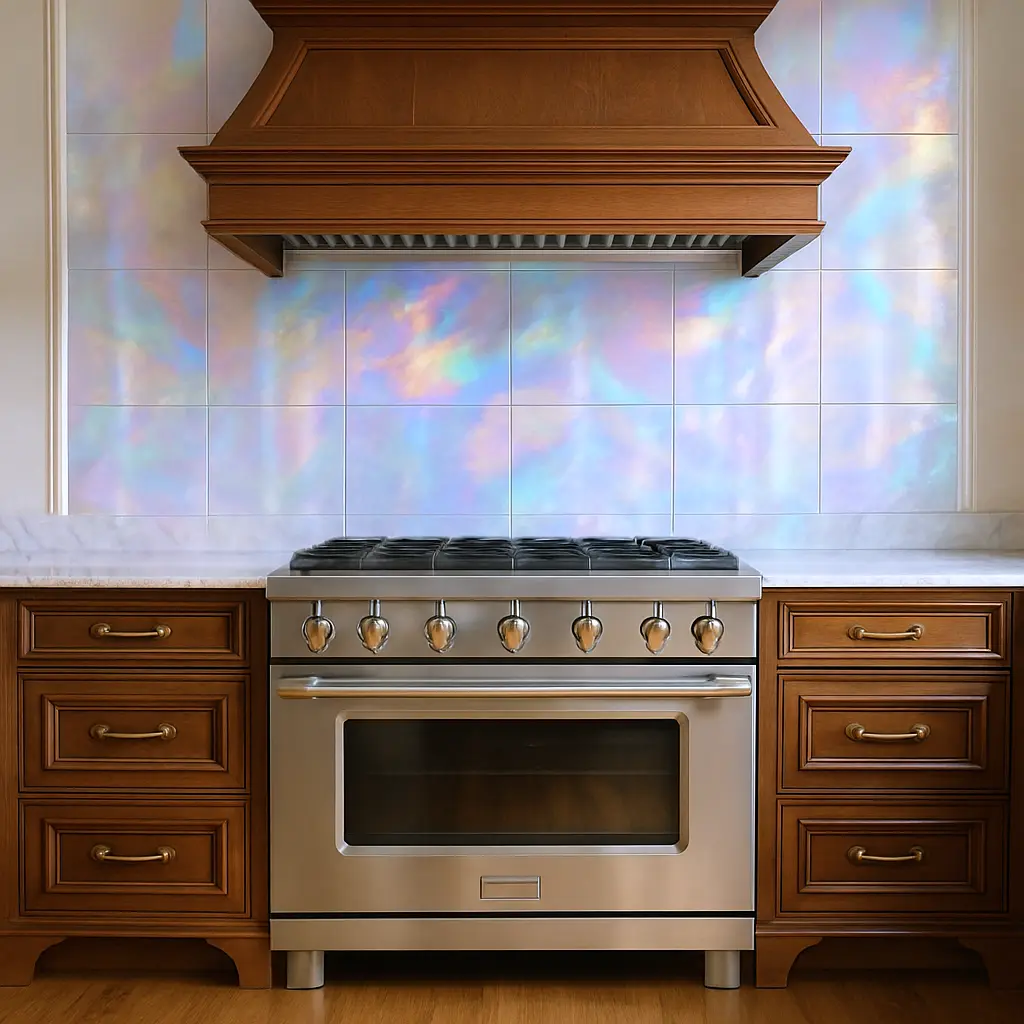
The premium, traditional choice, made from solid planks of woods like oak, maple, or walnut.
- Strengths: Unmatched natural beauty and character, extremely durable, can be sanded and refinished multiple times, and adds significant resale value to a home.
- Weaknesses: Most expensive option; can warp or develop hairline cracks in response to humidity and temperature changes.
- Best Use: Cabinet doors and face frames for a high-end, stained (natural wood) look.
2. Plywood
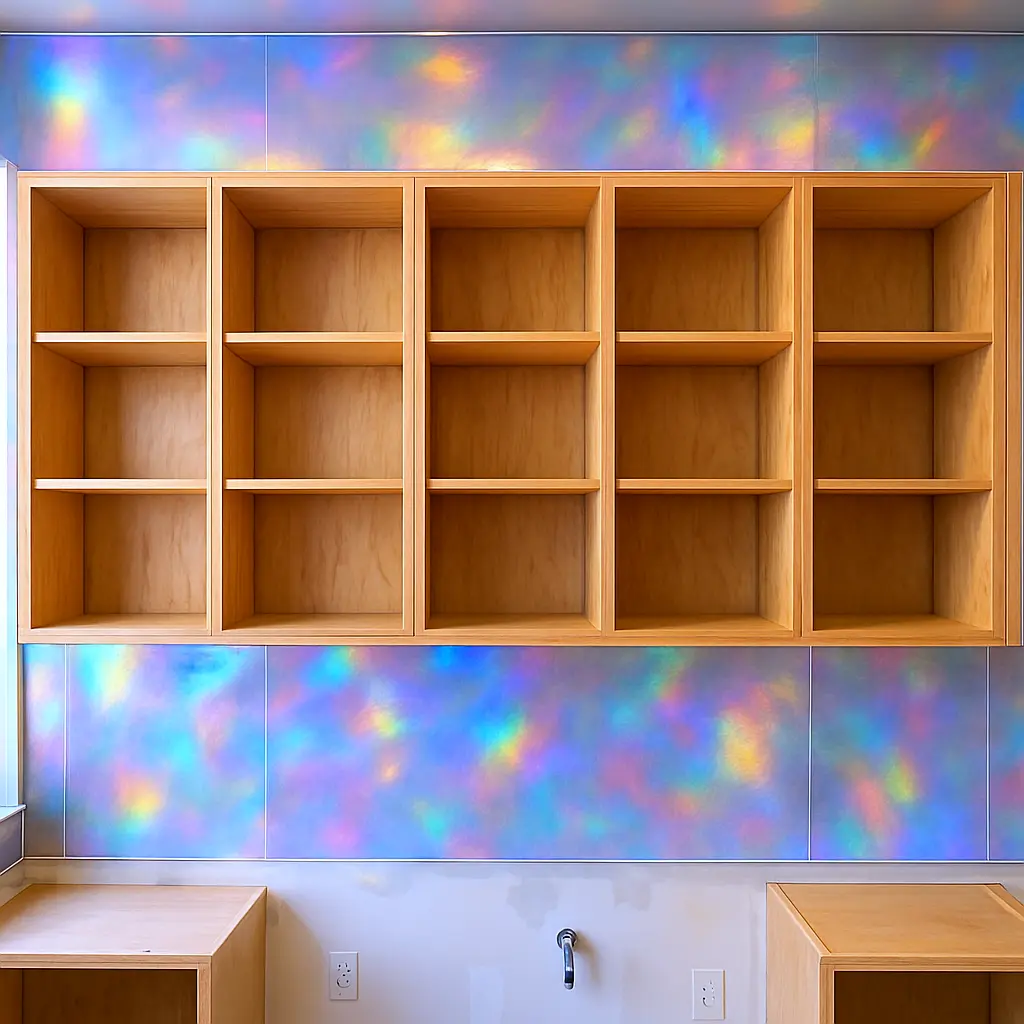
An engineered wood product made from thin layers of wood veneer (“plies”) glued together. The alternating grain direction of each layer gives it exceptional strength and stability.
- Strengths: Superior structural strength (holds screws and weight very well), highly resistant to sagging, and much more moisture-resistant than MDF or particleboard.
- Weaknesses: More expensive than MDF; the edges can look unfinished and must be covered with veneer or edge banding.
- Best Use: The “gold standard” for cabinet boxes (the carcass). It provides the structural integrity that ensures your kitchen lasts for decades.
3. MDF (Medium-Density Fiberboard)
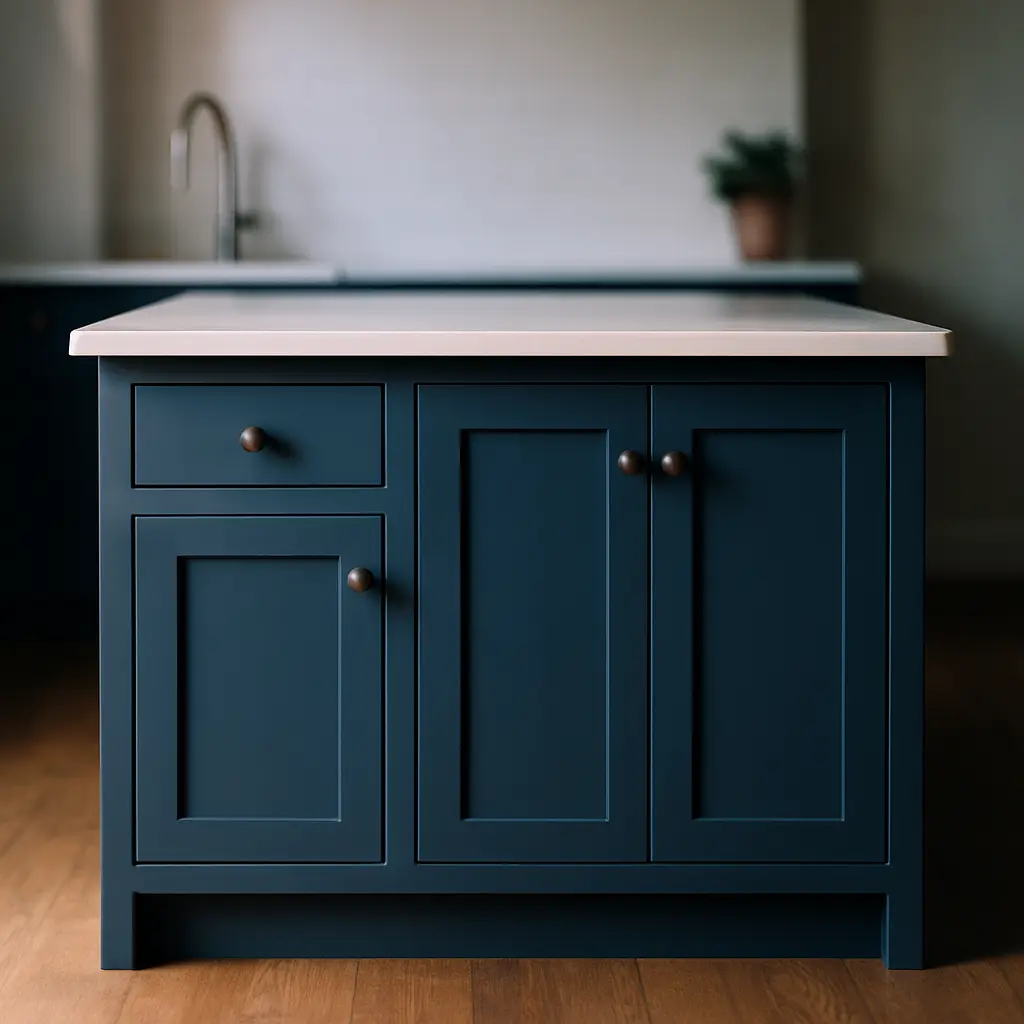
An engineered product made from wood fibers, wax, and resin, fused together under high heat and pressure to create a dense, smooth panel.
- Strengths: A perfectly smooth surface with no grain, making it the ideal substrate for a flawless paint finish. It is dimensionally stable and won’t warp or crack like solid wood, which is crucial for painted doors. It’s also more affordable than solid wood and plywood.
- Weaknesses: Extremely susceptible to water damage (it will swell and fall apart), very heavy, and doesn’t hold screws as well as plywood. Deep scratches are difficult to repair.
- Best Use: Painted cabinet doors and decorative panels.
Comparison: Solid Wood vs. Plywood vs. MDF
| Feature | Solid Wood | Plywood | MDF |
| Primary Use | High-end doors & frames | Cabinet Boxes & Shelves | Painted doors & panels |
| Appearance | Best (Natural) | Good (Wood Grain) | Poor (Requires Finish) |
| For Painting | Good, but can crack | Poor (Grain shows) | Best (Flawless Finish) |
| Strength & Screw-Holding | Excellent | Excellent | Fair (Can strip) |
| Moisture Resistance | Fair (Can warp) | Good | Poor (Disintegrates) |
| Stability (vs. Humidity) | Fair (Expands/Contracts) | Excellent | Excellent |
| Cost | High | Medium-High | Medium |
Verdict on Wood Materials: There is no single “best” material, but there is a best combination. For a long-lasting, high-quality kitchen, use Plywood for the boxes and choose your doors based on your desired finish: Solid Wood for a stained look or MDF for a painted look.
Part 2: The Modern Challenger – PVC (Polyvinyl Chloride)
PVC is a plastic-based material that stands completely apart from wood. It’s typically used in the form of PVC Foam Boards—rigid, solid sheets of plastic that offer a unique set of benefits.
Pros:
- 100% Waterproof: This is PVC’s superpower. It will never swell, warp, or be damaged by water, making it perfect for wet environments.
- Termite and Pest Proof: Termites and other pests have no interest in eating plastic, ensuring your cabinets are safe from infestation.
- Extremely Easy to Clean: The non-porous surface is stain-resistant and incredibly easy to wipe down.
- Lightweight: It’s much lighter than MDF or plywood, which can ease installation.
Cons:
- Susceptible to Scratches and Dents: PVC is a relatively soft material that can be scratched or dented. This damage cannot be repaired or refinished.
- Heat Sensitivity: This is its greatest weakness. High heat from ovens or cooktops can cause PVC to warp, discolor, or deform. Heat shields are a must.
- Can Yellow Over Time: Lower-quality PVC can be prone to yellowing after prolonged exposure to direct sunlight (UV rays).
- “Plastic” Feel: It lacks the warmth, depth, and premium feel of wood or even a professionally painted door.
The Ultimate Showdown: Best of Wood vs. PVC
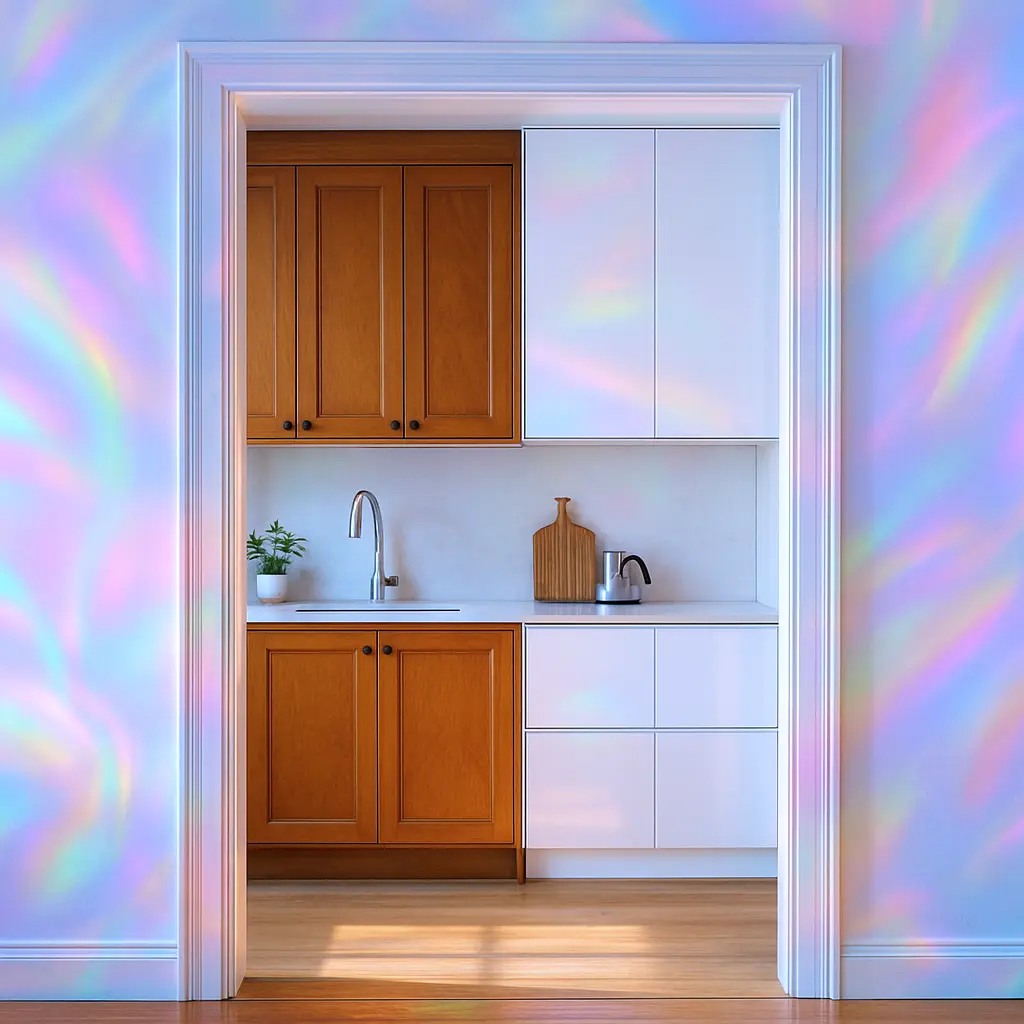
Here’s how the ideal wood combination stacks up against PVC for the modern kitchen.
| Feature | Best Wood Combo (Plywood Box + Wood/MDF Door) | PVC (Polyvinyl Chloride) |
| Water Resistance | Moderate (Plywood box handles moisture well). | Excellent (100% Waterproof). |
| Durability | Excellent. Resists scratches and wear better. Can be repaired. | Good, but can scratch easily. Repair is not possible. |
| Heat Resistance | Good. Withstands heat from cooking appliances well. | Poor. Can warp or melt with high heat. |
| Termite/Pest | Susceptible to termite attacks. | 100% Proof. |
| Look & Feel | Natural, warm, premium, classic. | Modern, sleek, glossy. Can feel “plasticky.” |
| Maintenance | Regular cleaning. Scratches can be repaired. | Very Easy. A simple wipe-down is all that’s needed. |
| Repairability | Yes. Sanding, painting, and polishing are all possible. | No. Once damaged, the panel needs to be replaced. |
Conclusion: Which Material Is Best for You?
The “best” material is the one that best suits your priorities. Here’s a simple guide to making your final choice:
Choose a Wood-Based Combination if…
- You Want a Timeless, Premium Look: You prefer a classic, traditional, or high-end feel that will remain stylish for years.
- Durability and Repairability are Key: You want cabinets that can withstand daily wear and tear and have the option to be repaired or fully refinished in the future.
- You Want a Long-Term Investment: You are building a “forever home” and want cabinets that add significant value and will last for 20+ years.
Choose PVC if…
- Waterproofing is Your #1 Priority: Your home is in a humid climate, your kitchen is prone to dampness, or you simply want a worry-free solution for areas exposed to water.
- You Live in a Termite-Prone Area: You want absolute peace of mind that your cabinets will never be damaged by pests.
- You Want an Ultra-Low-Maintenance Kitchen: You value function and ease of cleaning above all else, making it great for rentals or busy households.
- Your Style is Ultra-Modern: You want a sleek, high-gloss, or brightly colored kitchen and are not bothered by a non-traditional feel.
Pro-Tip (The Smart Hybrid Solution):
For the ultimate kitchen, consider a hybrid approach. Use Plywood boxes with your preferred door style (Wood/MDF) for the majority of your kitchen. However, for the cabinet directly under the sink, install a PVC cabinet. This way, the area most at risk for water damage is 100% protected, while the rest of your kitchen retains a classic, high-quality look and feel.



